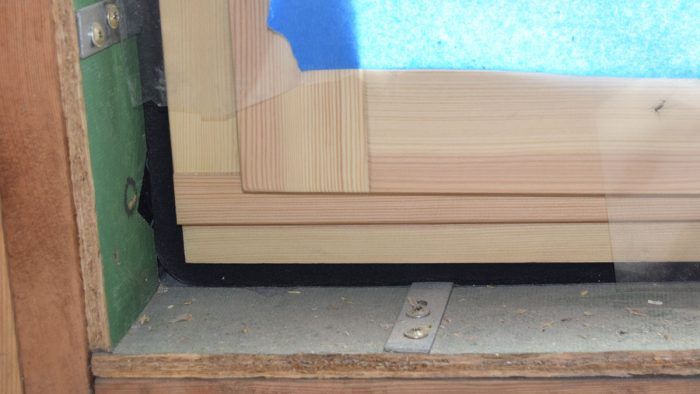What You Need to Know When Working With Hannoband Tape
An expert builder shares his experience using this expanding-foam tape as an alternative to traditional spray foam to seal gaps around new windows.

Mike Mahon, president of Adaptive Building Solutions, LLC, shares his thoughts on using Hannoband Tape for reliably and effectively sealing around doors and windows.

Installation
Our exterior wall system generally starts with a 2×6 stud wall (filled with cellulose) with 7/16-in. Zip System sheathing and 3-1/2 in. of Dow Blueboard EPS insulation, followed by a vapor-permeable weather barrier (Dow Weathermate Plus). This gets taped back to the extended window buck using special Dow Weathermate tape before applying 3/4-in. furring strips for cladding.
Once we do all of the flashing necessary to manage exterior water and the furring strips are in place around the window openings, we can then begin the process of installing the foam tape and windows. The foam tape is typically applied to the back side of the flashing tape in the window opening, so that we don’t put the Hanno directly on wood.
There are several sizes available but we generally use 2-in.-wide tape for 1/2-in. gaps, which is the 3E 64/6-15 tape that seals gaps between 1/4 in. to 5/8 in. We tried using the thicker tape, but at the compressed thickness of 3/8 in., it was too thick to push a window into the opening before it started to expand. The time of year and outside temperature really make a difference as to how much time you have between applying tape to the opening and installing the window.
- Narrow gaps between 3/32 in. and 3/8 in. can be sealed with the 3E 64/4-9mm tape
- For standard 1/2 1/2-in. gaps, the 3E 64/6-15 will seal gaps between 1/4 in. to 5/8 in.
- For the larger gaps, the 3E 74/10-20 will seal gaps from 3/8 in. to 3/4 in.
Things to Consider
Keeping the tape cold is critical. If the tape expands before the window is in place, you won’t get a good seal because the tape will roll.
To deal with this issue, we keep the Hannoband in a cooler on warm and hot days to buy time for the expansion and to keep the tape rigid for heavy windows. One suggestion around this problem was to use wood shims that are thicker than the tape. We slid the window in on the sill shims and pulled out the shims after the window was in place before securing the window to the opening. However, it left gaps where the Hannoband had to be cut for the shims—we don’t want voids and the air-leakage penalty was something to consider. The best approach is to get the base of the window up tight to the sill—resting on the cold tape—and tip the window upright into the opening without having all of the weight come down on the bottom strip of Hanno.
Like everything in our business, it takes a few times to get the hang of it. I highly recommend that other builders bring the crew together to do a practice run, knowing that they are going to pull the window out and do it again. Always keep in mind that early morning temperatures will change as lunchtime approaches and temperatures play a big role in managing the installation. It might sound complicated, but if you’re armed with knowledge and if you understand how the tape works, most builders have the adaptability to work with it after a few practice runs.
Hannoband tape is added insurance that the air-sealing program will maintain its integrity over the long haul, and we have learned that door and window openings are major culprits when it comes to air leakage in residential construction.


























View Comments
Hi, I’m new to installing using Hannoband - the tip about 6-15 being a bit easier to install with than the 10-20 is a good tip. We’ve been using 10-20 and had some issues with the rolling.
I also noticed (I’m now that guy) that in the pic up there, it looks like the tape was wrapped around the window corner. Hanno mentions to do butt joints - with one dimension extending past the edge of the frame by the joint width distance. The frame wraparound will cause improper expansion in the corner.